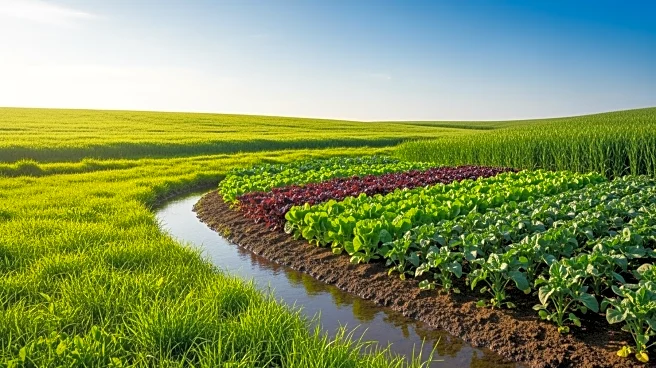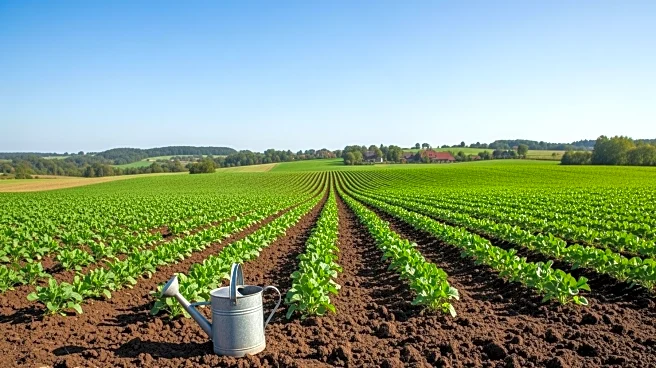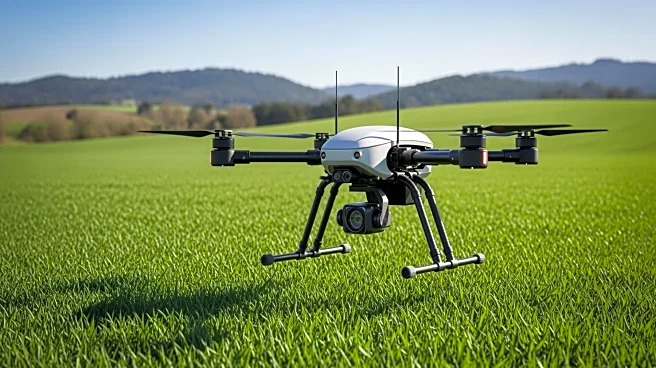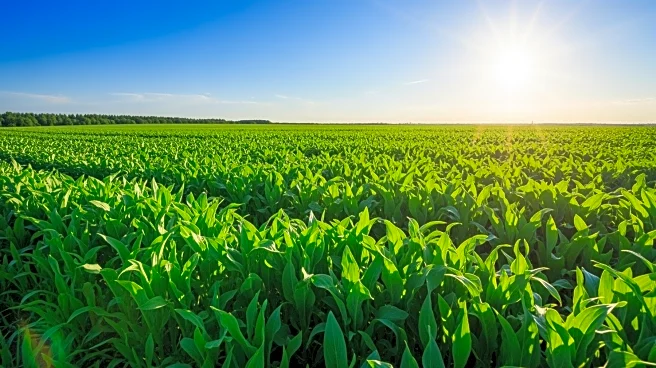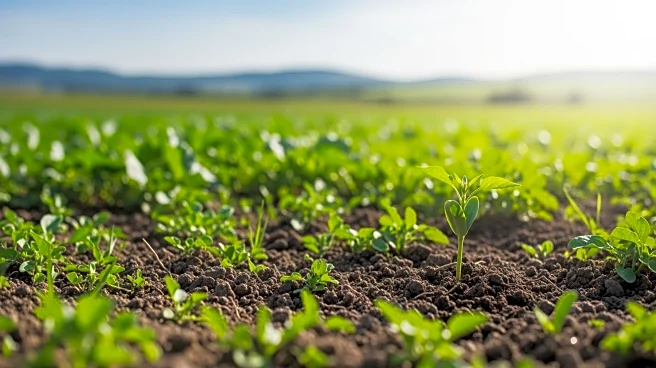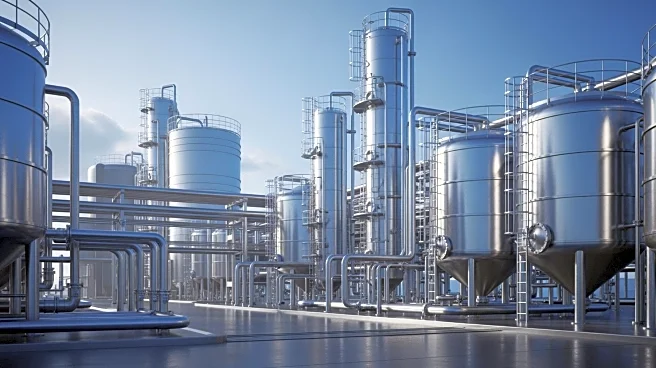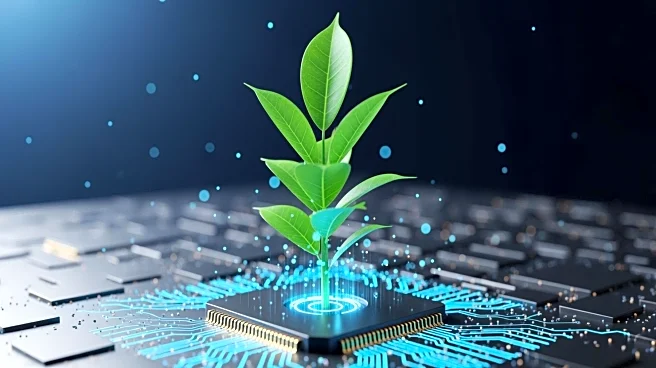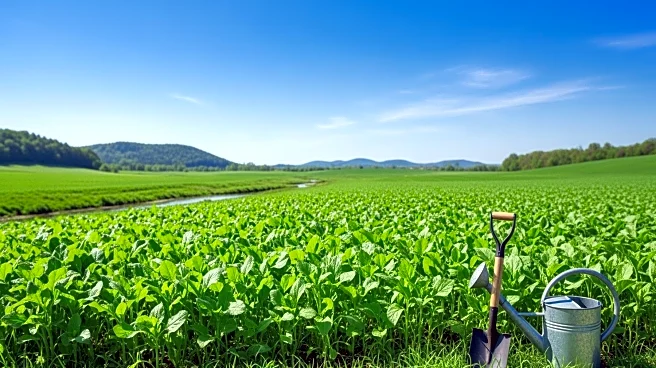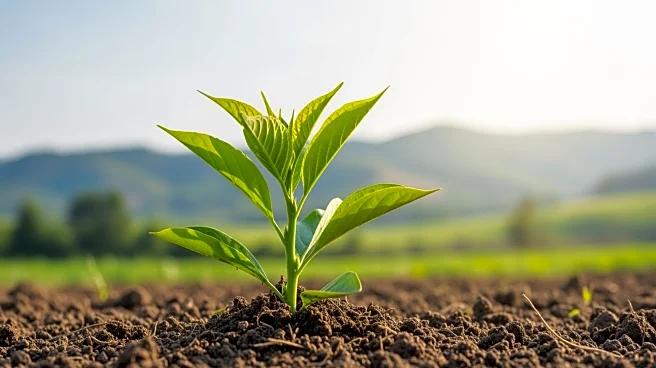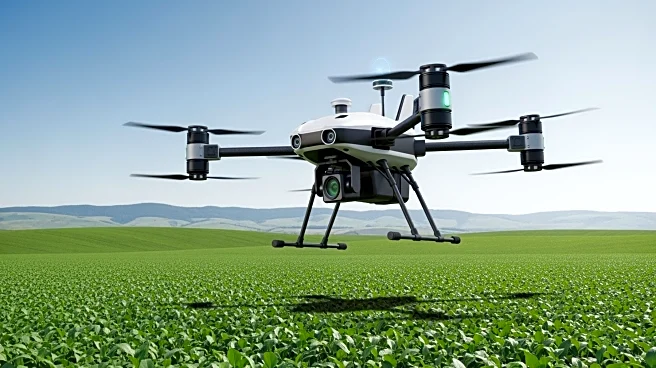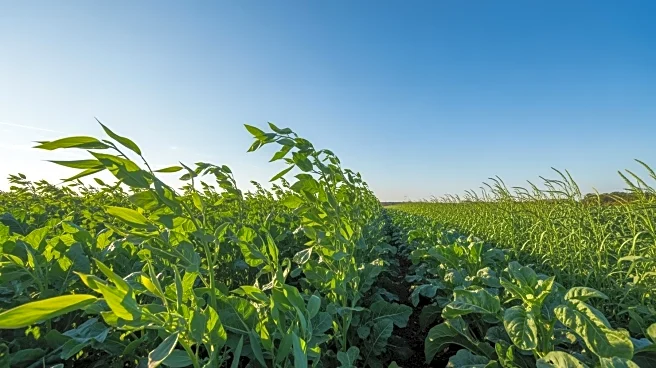What's Happening?
The global regenerative agriculture market is anticipated to grow significantly, reaching a valuation of $48 billion by 2032. This growth is driven by increasing demand for sustainable farming practices that enhance biodiversity, restore soil health,
and reduce carbon emissions. The market is expected to expand at a compound annual growth rate (CAGR) of 18.7% from 2025 to 2032. Key factors contributing to this expansion include rising consumer demand for sustainably sourced food products, concerns over soil degradation and water scarcity, and global efforts towards decarbonization. Technological advancements in agricultural technology (AgTech), such as robotics, advanced crop analytics, satellite imaging, and AI-powered monitoring tools, are facilitating the transition to regenerative practices on a large scale.
Why It's Important?
The shift towards regenerative agriculture is crucial for addressing environmental challenges such as soil degradation, water scarcity, and carbon emissions. By adopting these practices, the agricultural sector can contribute significantly to climate change mitigation and enhance food security. The market's growth reflects a broader trend towards sustainability, with consumer packaged goods companies, food manufacturers, and retail brands increasingly committing to transparent and sustainable sourcing. This transition not only benefits the environment but also creates new revenue streams for farmers through ecosystem services trading, including carbon credits. As governments and corporations invest in regenerative agriculture, the industry is poised to play a pivotal role in achieving global climate goals.
What's Next?
The regenerative agriculture market is expected to continue its rapid expansion, driven by supportive policies, technological innovations, and increased investment in sustainable farming practices. As more companies and governments commit to regenerative supply chains, the industry will likely see further advancements in precision agriculture and soil health programs. The focus on soil carbon enhancement, biodiversity regeneration, and transparent sustainability metrics will shape competitive strategies and drive industry growth. Future opportunities will be influenced by regulatory ecosystems, technological breakthroughs, and innovative financing models for farmers, positioning regenerative agriculture as a key driver for agricultural transformation.
Beyond the Headlines
Regenerative agriculture represents a holistic approach to farming that not only enhances productivity but also restores natural ecosystems. This approach reduces reliance on synthetic fertilizers and pesticides, promoting healthier soil and water cycles. The integration of cutting-edge technologies, such as AI-based soil mapping and IoT-enabled field monitoring, is revolutionizing farm management, enabling accurate carbon stock measurement and real-time land performance evaluation. As the industry evolves, it will continue to deliver measurable environmental and financial value, contributing to resilient food systems and global climate goals.
